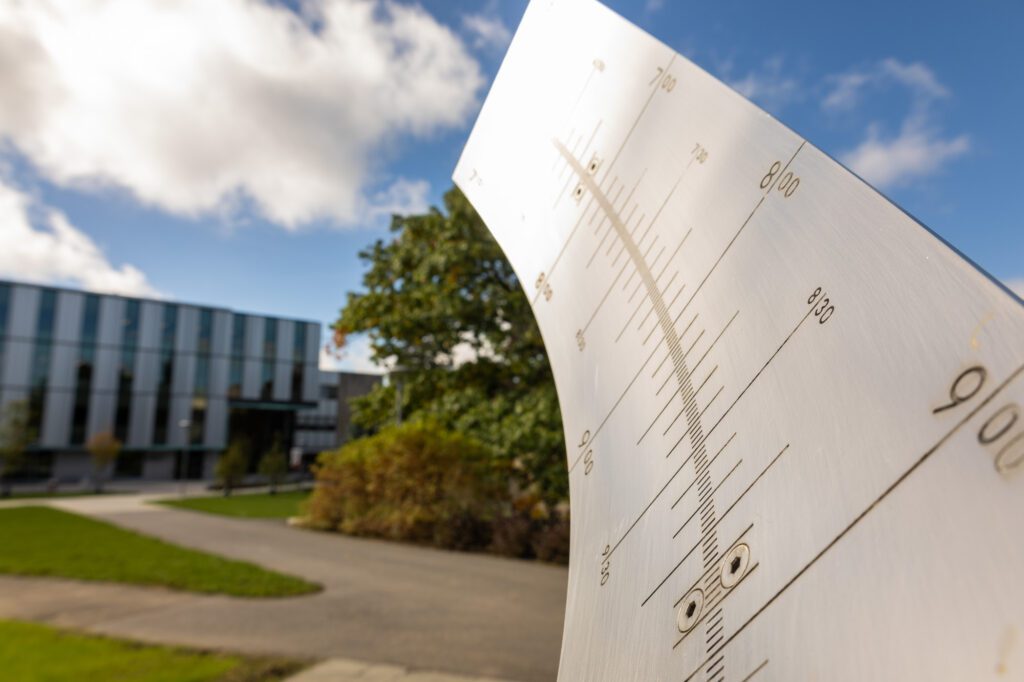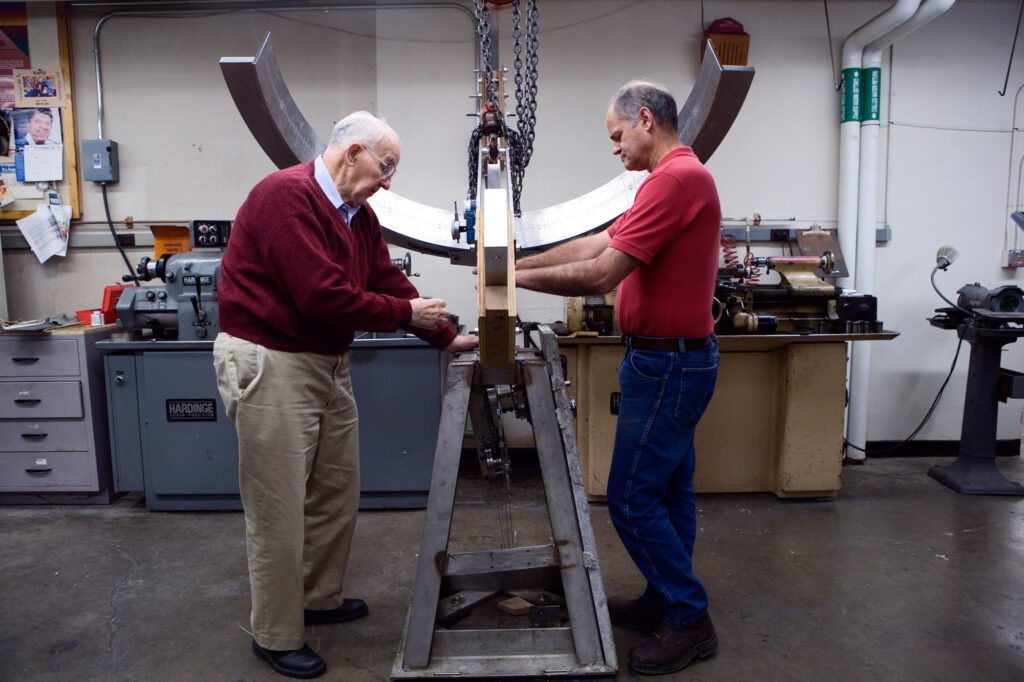How it Works
Measuring six feet across and weighing 650 pounds, the granite-based structure allows users to set the date by adjusting a dial. When sunlight shines, a thin cable casts a shadow and reveals the current time, to the minute. A system of gears, cables, and pulleys within the base is connected to the sundial’s heart: a grooved metal disk called the cam. Its careful design incorporates such factors as Ithaca’s latitude and longitude, the speed at which the sun travels across the sky, the tilt of Earth’s axis, and the irregularity of its orbit around the sun.

A Lasting Legacy
The sundial was design by Dale Corson, Cornell president emeritus. A physicist and former dean of Cornell Engineering, Corson had a deep interest in sundials, a fascination that traced back to his time in the U.S. Army Air Corps where he studied celestial navigation. He collaborated with Richard Phelan, a professor of mechanical and aerospace engineering, to build the sundial, which has since been restored and improved. Thanks to these efforts, the sundial continues to stand as a tribute to Joseph Pew Jr. and a lasting symbol of Cornell’s engineering tradition.

Marriage of Art and Science
Read more about the history of the Joseph N. Pew, Jr. Sundial in this Cornellians article: “The Engineering Quad’s Iconic Sundial Marries Art and Science”

